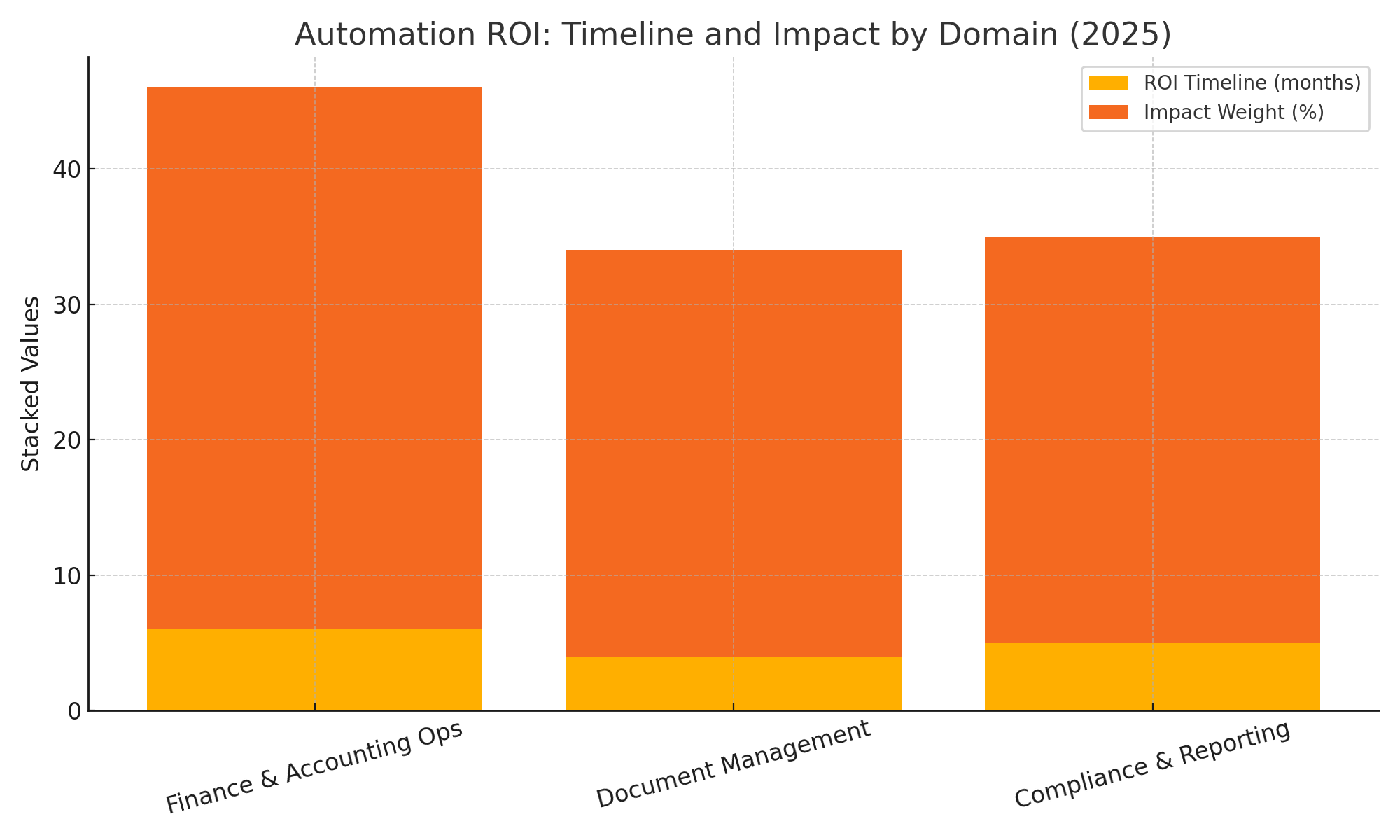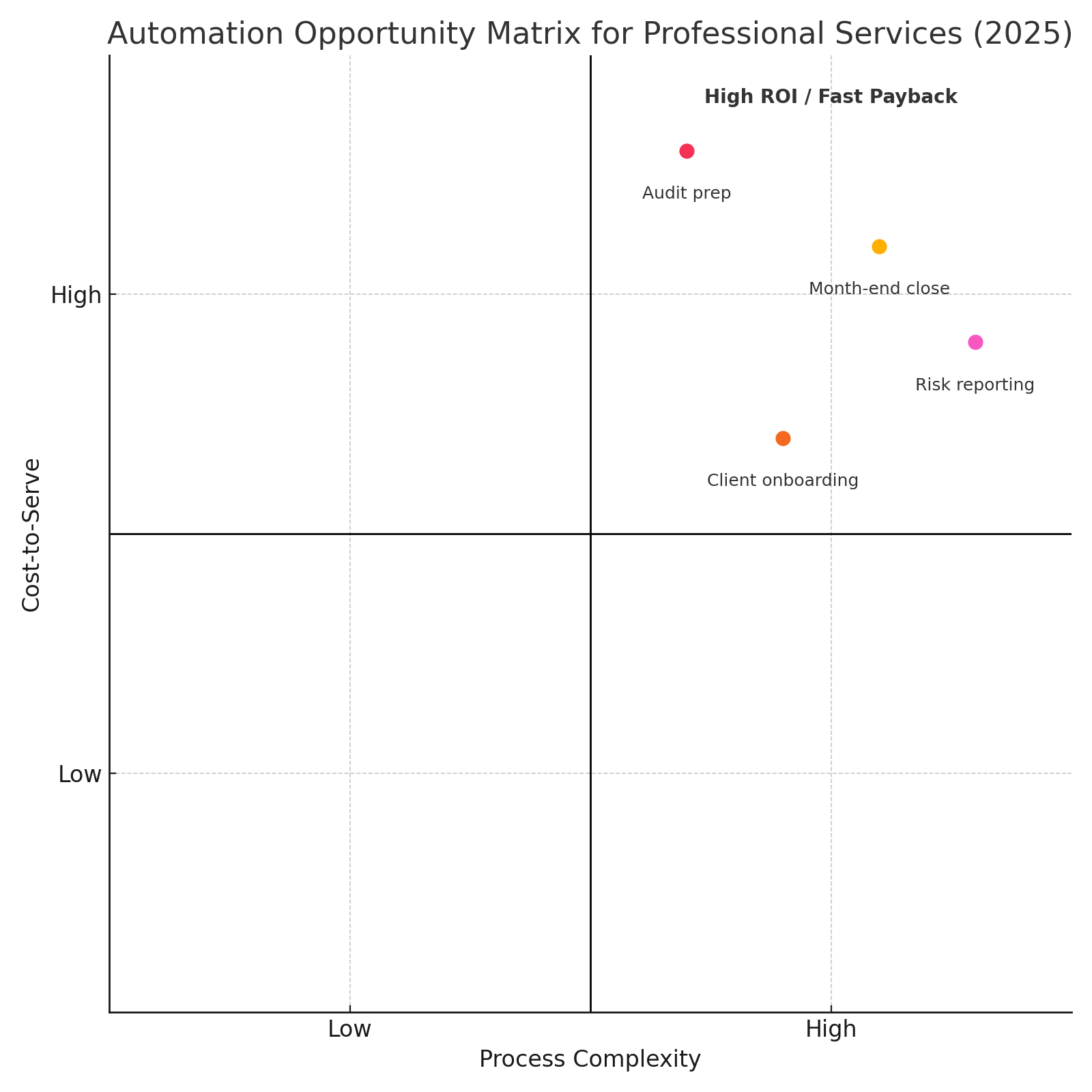Axelo Thought-Leadership Series
As professional services firms face margin pressure, talent constraints, and heightened client expectations in 2025, cost efficiency has re-emerged as a strategic priority. But unlike previous cycles of headcount reduction or offshore migration, today’s leaders are seeking structural, technology-driven shifts that can scale sustainably.
At the centre of this shift is automation. Not just as a cost-cutting lever, but as a force multiplier that enables firms to reset cost structures while improving accuracy, speed, and client outcomes.
So where exactly does automation deliver the fastest and most defensible payback? And how can firms embed it into their operating model without triggering organisational friction?
From cost centres to value centres
Traditional cost-reduction efforts in professional services have often targeted operational functions: finance, HR, compliance, and IT. However, as more processes become digital-first, these support functions are evolving into value enablers, especially when underpinned by intelligent automation.
In 2025, the leading sources of automation payback are clustered around three domains:
| Automation Domain | Typical ROI Timeline | Key Benefits |
| Finance and Accounting Ops | 3–6 months | Reduced cycle times, improved accuracy |
| Document Management | 2–4 months | Faster onboarding, lower error rates |
| Compliance & Reporting | 3–5 months | Real-time visibility, audit readiness |
Finance automation projects drive a 20–35% reduction in labor and outsourcing costs

Source: Hackett Group 2018 – finance automation cost reductions of 20–35%
Rethinking the automation roadmap
Many firms still approach automation in siloed, departmental projects. While that can produce quick wins, it often leaves money on the table. Instead, we advocate for a portfolio-based approach, which maps automation opportunities across:
- Process complexity (simple to dynamic)
- Cost-to-serve (manual intensity and error rates)
- Impact on client delivery
This lens enables decision-makers to prioritise initiatives not just by potential savings, but also by strategic alignment and scalability.
Leading with people, not just technology
Automation alone doesn’t reset cost structures. Execution depends on change management, process redesign, and a clear articulation of value for employees.
Professional services firms must build automation fluency into their workforce from associates to partners. Those that succeed will treat automation not as a one-time project, but as an ongoing discipline built into governance, budgeting, and service delivery.
What next for professional services leaders?
Resetting cost structures is no longer about slash-and-burn tactics. In 2025, it’s about embedding intelligence into the very architecture of your firm.
Start by asking:
- Where are we spending disproportionately to value delivered?
- Which processes show the highest manual friction and error rates?
- How might we orchestrate automation, analytics, and human expertise to drive client outcomes?
At Axelo, we help leaders operationalise these answers, linking strategy to execution through our delivery subsidiaries like Accario and 4walls.
Final thoughts
Automation in 2025 is no longer a technology discussion. It’s a structural decision. And those who lead early will shape the cost baselines and service expectations for the next decade.
73% of companies achieve ROI within 30 days; average 389% ROI in professional services

Data point: 73% ROI achieved in 30 days; average ROI = 389% in professional services (Autonoly, 2025)
References
Mathai, A. (2024) The ROI of Automated Reconciliations and Close Management, Trintech. Available at: https://www.trintech.com/blog/the-roi-of-automated-reconciliations-and-close-management (Accessed: 22 July 2025).
Team, A. (2025) The automation ROI report: Which business functions pay back in 30 days: Complete Automation Strategy Guide, Autonoly. Available at: https://www.autonoly.com/blog/6874852d9f790d7c5188cfd6/the-automation-roi-report-which-business-functions-pay-back-in-30-days? (Accessed: 22 July 2025).